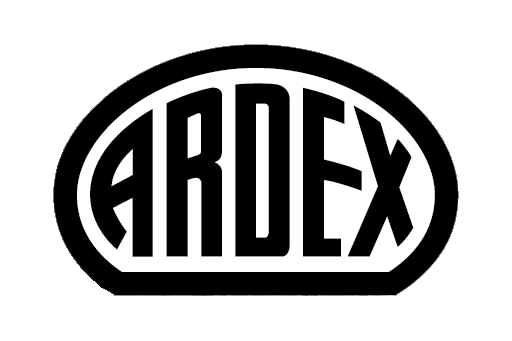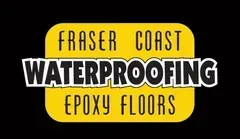Get In Touch TodaY 0423 964 496
How To Clean Epoxy Floors

Epoxy floors are a type of flooring made from a mixture of resins and hardeners, which are then applied over a concrete surface. The resulting finish is a durable, glossy and seamless surface that is ideal for high-traffic areas and resistant to scratches, stains and moisture. With proper maintenance and cleaning, epoxy floors can look as good as new for years, so it’s essential to learn correct cleaning and upkeep techniques. Ahead are our tips for cleaning your epoxy floors.
Cleaners You Can Use for Cleaning Epoxy Floors
There are several cleaners you can use to clean epoxy floors, including:
- Mild Detergent: A mild detergent solution, like dish soap, can be used to clean dirt and grime from the surface of the floor. Simply mix a small amount of soap with water and use a mop or cloth to clean the floor.
- Vinegar: A solution of water and vinegar can be used to clean the floor and remove any stubborn stains. Mix one part vinegar with one part water and apply in the same way as a detergent.
- Baking Soda: Baking soda can be used to remove tough stains from the surface of the floor. Make a paste of baking soda and water and apply it to the stain; allow it to sit for a few minutes before rinsing with water.
What You Should Not Put on Epoxy Floors
While epoxy floors are incredibly durable and resistant to many substances, there are certain substances you should avoid using, such as:
- Solvents: Solvents, like gasoline or oil, can damage the surface of the floor and remove the finish.
- Abrasive Cleaners: Abrasive cleaners, including scouring pads or steel wool, can scratch the surface of the floor and remove the glossy finish.
- Harsh Chemicals: Harsh chemicals, such as bleach or ammonia, can damage the surface of the floor and remove the finish.
Steps in Cleaning Epoxy Floors
Cleaning epoxy floors is a simple process that can be achieved in just a few steps:
- Sweep or vacuum the floor to remove any loose dirt or debris
- Mix your chosen cleaner with water according to the instructions
- Use a mop or cloth to apply the solution to the floor, making sure to cover all areas evenly
- Allow the solution to sit on the floor for a few minutes
- Rinse the floor with water and allow it to dry completely
To keep your epoxy floors looking their best, consider protecting the surface further by placing mats or rugs at entrances to minimise dirt and debris being brought in from outside.
Benefits of Epoxy Floors
Epoxy floors offer many benefits for both commercial and residential buildings, including:
- Durability, with strong resistance to scratches, stains and moisture
- Easy to clean and maintain
- Aesthetically pleasing with a glossy and seamless finish
- Versatile and can be customised with a variety of colours and designs
- Resistant to chemicals, making them ideal in industrial or commercial settings.
- Cost-effective
- Non-slip
- Hygienic
If you’re looking for a fantastic flooring solution, give our friendly team a call today on
0423 964 496.

Remove Stains With Nylon Brush
- Sweep the area with a soft-bristle broom to remove loose dirt and debris.
- Mix a mild soap or detergent with warm water.
- Dip the nylon brush in the soapy water solution and scrub the stained area in a circular motion.
- Rinse the area thoroughly with clean water.
- Use a squeegee or soft cloth to remove excess water and allow the floor to air dry.
- Remember, using a nylon brush is essential to avoid damaging the epoxy floor's surface.
Use Lactic Acid-based Cleaner
- Mix the cleaner with water according to the manufacturer's instructions.
- Apply the cleaning solution to the epoxy floor, focusing on the dirtiest areas.
- Allow the cleaner to sit for a few minutes to break down the dirt and grime.
- Scrub the floor gently with a soft-bristle brush or mop.
- Rinse the floor with clean water to remove any residue.
- Dry the area using a squeegee or soft cloth.
Use Degreaser To Remove Tyre Marks
- Apply the degreaser directly to the tyre marks.
- Let the degreaser sit for 5-10 minutes, allowing it to break down the rubber and oils.
- Scrub the area with a nylon brush or soft-bristle broom.
- Wipe away the residue with a damp cloth.
- Rinse the floor with clean water and allow it to dry.
Regular Maintenance For Pristine Epoxy Floors
Epoxy floors require minimal upkeep, but regular cleaning will keep them in top condition. Here are a few maintenance tips:
- Sweep the floor regularly to remove dirt and debris.
- Mop the floor with a mild soap and water solution every few weeks.
- Clean up spills immediately to prevent stains and damage.
- Use protective pads under heavy furniture and appliances to avoid scratches and dents.
- Refrain from using abrasive cleaners and tools that may damage the epoxy coating.
By following these steps, your epoxy floors will stay clean, vibrant and durable for years to come.
At
Fraser Coast Waterproofing, we understand the importance of well-maintained epoxy floors.
Our experienced team is here to provide top-notch
waterproofing services and advice to help you preserve your investment.
Contact us today to learn more about our services or to schedule a consultation.
Explore
What We Do
Locations We Service
Showroom Hours
- Monday
- -
- Tuesday
- -
- Wednesday
- -
- Thursday
- -
- Friday
- -
- Saturday
- Closed
- Sunday
- Closed
Trading Hours
- Monday
- -
- Tuesday
- -
- Wednesday
- -
- Thursday
- -
- Friday
- -
- Saturday
- Closed
- Sunday
- Closed
Licenses
- ABN 51 826 273 877
- QBCC 15075446
Visit www.localsearch.com.au


















